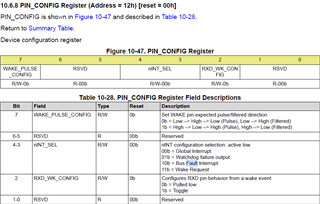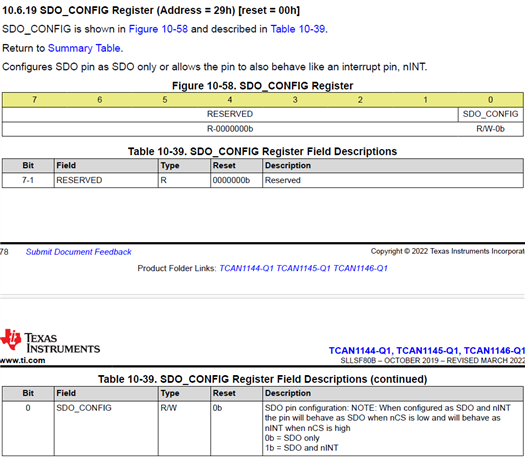Tool/software:
Hi AE,
I have a few questions I'd like to ask.
1. As fault detection requires the nINT configuration, both 12h and 29h registers need to be set, correct?


2. If a fault interrupt occurs, and fault one hasn't been cleared yet, then fault two happens —
The TCAN1146 will the 54h status be updated, or will it remain showing fault one?"

3. In order to clear the nINT interrupt, is it necessary to clear the registers from 50h to 54h?

Besr Regards

